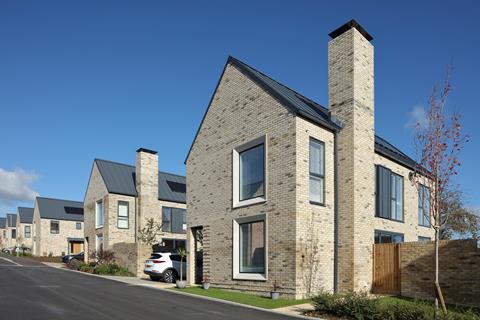As the demand for measurable, data-led reporting on carbon emissions increases across the construction industry, the need for manufacturers to improve their transparency, accountability, and specification support also increases. Mike Edwards, Group Head of Sustainability for Marshalls, discusses the business’ latest developments to help.
The construction industry is grappling with the reality that the built environment contributes to nearly 40% of our global greenhouse gas emissions (Carbon Trust), and as a result, we have seen a surge in demand for carbon information and data from customers and a desire for a deeper understanding of what manufacturers are actively doing to reduce their environmental impact.
As more and more clients, particularly in the public sector, pursue certification schemes, project carbon-reduction targets, or wish to reduce their organisational carbon footprints and supply chain emissions, product manufacturers must make it easier for customers and specifiers to base their decision-making on clear evidence and robust science-based data.
This will reassure clients that they are working with suppliers who are actively committed to reducing greenhouse gas emissions, not just paying lip service.

Science-based targets
To this end, in October, we received validation from the Science Based Target Initiative (SBTi) of our near-term and long-term target pathways as well as confirmation of our validated target to be net-zero across all emission scopes (1, 2 and 3) by 2050.
The SBTi is the gold standard in third party validated carbon reduction targets and confirms Marshalls has a clearly-defined pathway to achieving its near and long-term targets. In the near-term, we aim to reduce absolute scope 1 and 2 greenhouse gas emissions by 50.5% by 2030 and absolute scope 3 greenhouse gas emissions by 37.5% by 2033.
The SBTi also validated our long-term targets, to reduce absolute scope 1 and 2 greenhouse gas emissions by at least 90% by 2040 and absolute scope 3 greenhouse gas emissions by at least 90% by 2050. This means our overall SBTi net-zero target has been set at 2050. (Targets use 2018 as the base year.)
To achieve these targets, we will work closely with our suppliers – particularly those who supply cement and fuels and provide logistics services – to explore the technologies and innovations available to decarbonise our supply chain.
Our commitment to our pathway will also influence product development and investment, ensuring we meet customer sustainability needs and remain competitive in a market increasingly focused on environmental responsibility.
Evidencing carbon
The development and availability of robust Environmental Product Declarations (EPDs) is one area where manufacturers must step up, providing independently verified data that supports accreditations such as BREEAM and aid specification and procurement decisions.

In the past 18 months, Marshalls has published 18 EPDs. As an example, our most recent is for our concrete facing bricks. The previously published EPD only covered cradle-to-gate analysis, but rightly, the demands for more detailed environmental data have moved on, so the new version now includes cradle-to-grave analysis, which assesses the full lifecycle and incorporates all UK sites where the product is produced.
This EPD provides specifiers and contractors with a clear indication of its carbon footprint, 120.47kg CO2 e/tonne (GWP Total over the whole product lifecycle), and enables easy comparison between say, our concrete bricks and their clay counterparts. In doing so, specifiers can see that when comparing the total carbon footprint of a concrete facing brick and a clay facing brick over their lifetimes, the carbon footprint is significantly lower for a concrete facing brick.[1]
By expanding and improving our EPD offering, we will continue to enable specifiers to make more considered choices and collate evidence for accreditations.
Designing out carbon
Manufacturers should be supporting their customer base in product application, enabling customers to harness their experience, knowledge, or even formalised design services. Our work on Westminster City Council’s King Street trial, in partnership with FM Conway, exemplifies how a collaborative approach and a willingness to test dogmatic thinking can bring significant carbon savings.

Marshalls’ specification and design team recently worked with Westminster Council on its standard 63mm thick paving specification of our Scoutmoor natural stone units. Using the team’s calculations and in-depth knowledge of the stone’s physical properties, it was possible to reduce the depth paving by 20%. The change resulted in an immediate carbon reduction of 4kg CO2 e for every square metre of the project.
By working collaboratively and challenging established practices – whether product or project-led, we truly believe that the whole supply chain can work to lower the carbon impact of construction.
For more information, visit
[1] Based on 236.97 Kg CO₂e/Tonne (GWP A1-C4) Source: Brick Development Association UK Clay Brick EPD, issued 2019

























